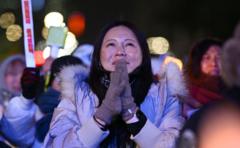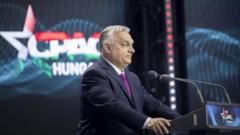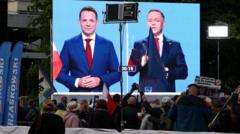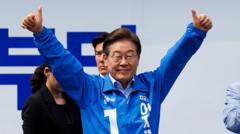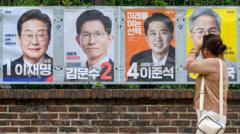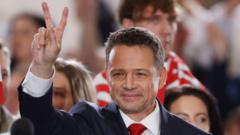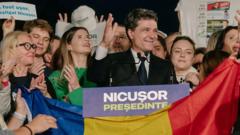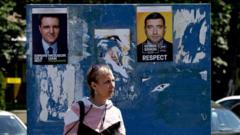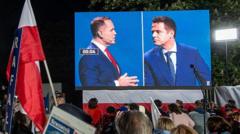As Poland prepares for a highly anticipated presidential runoff election this Sunday, the age group vital for the country's future—young voters—seems to be disenchanted with the mainstream candidates. Many under 30 are looking for alternatives beyond the centrist and nationalist figures in the running.
Young Polish Voters Challenge Presidential Candidates in Pivotal Election

Young Polish Voters Challenge Presidential Candidates in Pivotal Election
The Polish presidential runoff on Sunday focuses on candidates struggling to engage a significant youth demographic.
This critical election has implications not only for Poland’s political landscape but also for the broader European Union, as debate rages over the direction of the nation, a significant economic player in post-communist Europe. In the first round of voting, held on May 18, a substantial number of young voters opted for anti-establishment candidates who will not be advancing to the runoff. This left incumbent Prime Minister Donald Tusk and his Civic Platform party, along with rivals from the nationalistic Law and Justice party, reflecting the discontent among youthful electorates toward traditional political figures.
The upcoming runoff sees Rafal Trzaskowski, the progressive mayor of Warsaw, pitted against Karol Nawrocki, a former boxer and historian who advocates for a more nationalist agenda. With young voters holding considerable sway over the outcome, both candidates are keen to find ways to appeal to this disengaged demographic. However, the challenge remains daunting as many young Poles continue to rally around candidates positioned outside the conventional political spectrum, leaving the future of the election uncertain.
Ultimately, how these candidates adapt to the pressing desires of young voters may determine the future course of Polish politics in this crucial transitional moment.
The upcoming runoff sees Rafal Trzaskowski, the progressive mayor of Warsaw, pitted against Karol Nawrocki, a former boxer and historian who advocates for a more nationalist agenda. With young voters holding considerable sway over the outcome, both candidates are keen to find ways to appeal to this disengaged demographic. However, the challenge remains daunting as many young Poles continue to rally around candidates positioned outside the conventional political spectrum, leaving the future of the election uncertain.
Ultimately, how these candidates adapt to the pressing desires of young voters may determine the future course of Polish politics in this crucial transitional moment.



